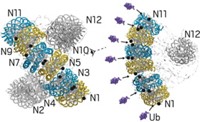Advertisement
Grab your lab coat. Let's get started
Welcome!
Welcome!
Create an account below to get 6 C&EN articles per month, receive newsletters and more - all free.
It seems this is your first time logging in online. Please enter the following information to continue.
As an ACS member you automatically get access to this site. All we need is few more details to create your reading experience.
Not you? Sign in with a different account.
Not you? Sign in with a different account.
ERROR 1
ERROR 1
ERROR 2
ERROR 2
ERROR 2
ERROR 2
ERROR 2
Password and Confirm password must match.
If you have an ACS member number, please enter it here so we can link this account to your membership. (optional)
ERROR 2
ACS values your privacy. By submitting your information, you are gaining access to C&EN and subscribing to our weekly newsletter. We use the information you provide to make your reading experience better, and we will never sell your data to third party members.
Biological Chemistry
Patience, My Dear Polymerase
How a transcribing polymerase gets past the protein spools that stand in its way
by Jyllian N. Kemsley
August 3, 2009
| A version of this story appeared in
Volume 87, Issue 31
When RNA polymerase II (Pol II) transcribes DNA to messenger RNA in eukaryotes, it must overcome the physical barrier imposed by the wrapping of DNA around histones. It has remained a mystery whether the enzyme actively unwraps the DNA to gain access or whether Pol II waits for the DNA-histone complex to locally unwrap itself before making a move. Now, a group led by Carlos Bustamante of the University of California, Berkeley, has used optical tweezers to follow a single Pol II molecule as it processes DNA wrapped around histones and anchored between two trapped beads (Science 2009, 325, 626). As Pol II moves along DNA, it pauses at the DNA-histone complex. Bustamante and colleagues found that the frequency and length of the Pol II pauses are consistent with Pol II waiting for DNA to unwrap. "The polymerase, rather than actively separating DNA from histones, functions instead as a ratchet" that seizes on unwrapped DNA and transcribes it before it becomes inaccessible again, then waits for the next opportunity, the authors write. Modulation of DNA wrapping and unwrapping around histones could be critical for transcription regulation, they conclude.





Join the conversation
Contact the reporter
Submit a Letter to the Editor for publication
Engage with us on Twitter